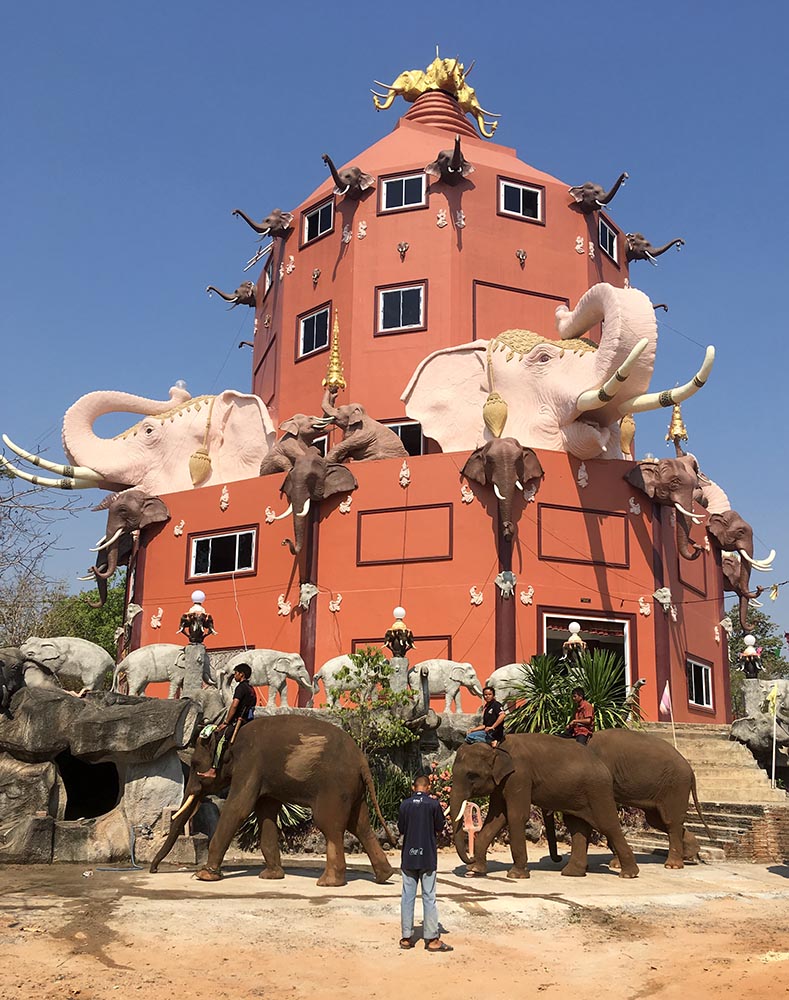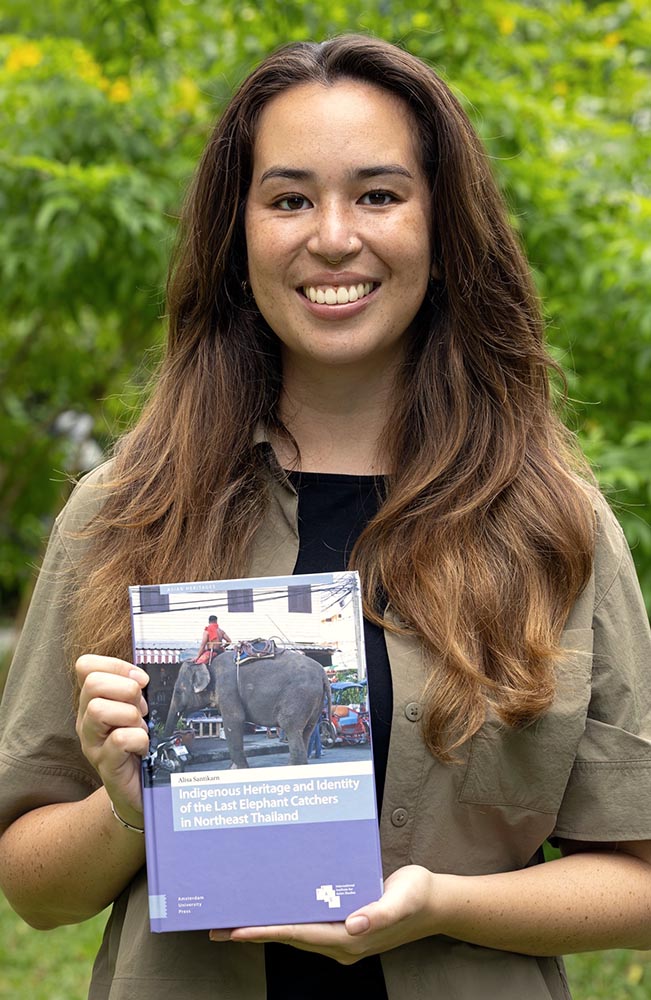Indigenous Heritage and Identity of the Last Elephant Catchers in Northeast Thailand
This book is the culmination of my PhD project, which began in 2018 at the University of Cambridge. Having one’s final product look entirely different to the initial proposal is an experience I think many PhD candidates can relate to. In my case, I imagined a research project centered on the heritage of elephants and ivory. As I discuss in the book’s introduction, it was a series of fortunate events, started by a research rabbit hole, following up on a reference to “[t]he most famous elephant people in Thailand,” 1 that led me to contact an email address left in a comment on a blog post.
This led me to Dr Sanong Suksaweang, who was, at the time, Vice President of the Kui Association of Thailand. This encounter completely redirected my PhD away from elephants and towards the supposedly famous ‘elephant people’ that I was only just hearing of for the first time. My research became a more personal project of learning and unlearning. Therefore, I cannot thank Dr Sanong enough, not only for first commenting on that blog post three months before I started my PhD, but also for coming to Bangkok with his wife to meet me and my family, teaching me about his culture, and introducing me to the Kui Ajiang community in Surin, which came to be the focal point of my research. I am also, of course, incredibly grateful to the Kui Ajiang for sharing their time and knowledge with me, making this research possible. I also owe a large thanks to the ESRC, which funded a one-year postdoctoral position that allowed me to finish this monograph, and which supported the Open Access publication, as well as the fantastic team at IIAS and AUP, including (but not limited to) Michael Herzfeld, Mary Lynn van Dijk, and Inge Klompmakers.
Although, as the title suggests, elephants feature quite prominently in this book – with ‘Kui Ajiang’ meaning the ‘elephant people’ – if I’ve done my job right, they are only secondary characters. While this is a book about entanglement – of people and nature, of the Kui Ajiang and the elephants – the characters I am trying to recenter, who have been comparatively hidden in existing narratives, are the Kui Ajiang, rather than their elephants.
My introduction to Dr Sanong and the Kui community in Thailand not only put my research on a new trajectory, but it also had me rethink my preconceptions about a country I thought I knew. I am Thai-Australian and spent the first twelve years of my life in Bangkok. During this time, I was taught in my ‘Thai Studies’ class at school that Thailand had ‘Hill Tribes’. My teacher had an illustrative prop, with dolls of each of these groups – maybe seven of them at that time. Over the course of my research, this narrative was unravelled. The Thai state has consistently denied the existence of Indigenous Peoples within its borders. This is untrue. There are no exact figures – in large part due to this denial – but the Council of Indigenous Peoples of Thailand suggests 42 groups representing some four million people. Just recently, on 6 August 2025, Thailand’s House of Representatives passed an amended version of the ‘Act on the Protection and Promotion of Ethnic Ways of Life’ – marking the country’s first bill protecting the rights of the country’s diverse ethnic groups (albeit with explicit reference to ‘Indigenous Peoples’ removed).

Fig. 2: Wat Pa Ajiang, March 2019. (Photograph by Alisa Santikarn)
Another part of national history that I had to rethink was the assertion that Thailand was never colonised. Michael Herzfeld, who was the external examiner for my thesis and wrote the preface to this book (and who tried, as much as possible, to have me remove any split infinitives from the final manuscript), describes Thailand’s relationship with colonialism as ‘cryptocolonial’, where ‘independence’ hinged on relinquishing considerable control to the colonising power. 2 On top of that is the element of what Sakdipat and Supatra describe as ‘internal colonialism’, whereby the state – known as Siam at the time – was the colonising force against its citizens, impacting particularly the country’s Indigenous Peoples and ethnic minorities. 3 . Chophayom Journal, 28(1), 71–78.] And so, for a book that I have just said was about the Kui Ajiang, we do not actually come to them until Chapter 6. Chapter 3 focuses on where Thailand’s attitudes towards its Indigenous Peoples originate, tracing this history from the colonial period through to the Cold War. Chapter 4 then ties this to the environment through an examination of national environmental discourse and territorialisation through the same period, into the present, while Chapter 5 provides an overview of national approaches to cultural heritage. In this book, I draw parallels between the restriction of cultural heritage as defined by Authorised Heritage Discourses (AHDs) 4 that exist at various levels, and an Authorised Environmental Discourse – focused on the government’s historical and continued environmental policies and their impacts on Thailand’s Indigenous Peoples.
And then, finally, I come to the Kui in Chapter 6, and the domestic and provincial politics in which they find themselves embedded. The Kui Ajiang – as a subset of the Kui community, distinguished by their elephant-related heritage practices – represent a paradox. Historically serving as royal elephant keepers, responsible for procuring and caring for elephants for war, as well as identifying and catching auspicious white elephants, the Kui Ajiang are closely aligned with the national AHD. However, the Kui and Kui Ajiang have been hidden within the historical record and are relatively unknown within wider Thai society. It is the elephants – not the elephant people – that have visibility.

Fig. 3: Alisa Santikarn with her book Indigenous Heritage and Identity of the Last Elephant Catchers in Northeast Thailand. (Photograph courtesy of Alisa Santikarn, 2025)
Another misconception I had in my early research related to what caused the end of elephant catching. What, based on some initial readings, I had previously thought was a ‘ban’ on elephant catching, resulting in a firm end to the practice in 1958, turned out to be a slower dwindling, caused not by a ban (which did not exist until much later), but by a border dispute between Thailand and Cambodia over the ownership of Preah Vihear Temple. Environmental restrictions factor in later, preventing a return to elephant-catching. Contention over this border – and claims to heritage – has raised its head again in recent months, representing another nationalistic conflict that has once again impacted the Kui living on both sides of the border.
Centred on the end of this elephant-catching tradition, my book examines the run-on consequences in three key areas: (1) the elephant-catching lasso – called the ‘Pakam rope’; (2) the role of the elephant catchers (mor chang) themselves; and (3) a language called phasa phi pa (‘forest spirit language’), spoken by the mor chang during their time in the forest searching for elephants.
For the Kui Ajiang in Surin, instead of fixating on the end of their traditions, they are focused on their renewal and revitalisation, adapting traditions in response to contemporary restrictions and promoting Kui culture. These adaptations have produced intergenerational conflict over what constitutes ‘authenticity’, with the older generation of mor chang – those who experienced an elephant capture in their youth – preferring to keep to the ‘rules’ of their traditions, even if it means the practice will come to an end. This revitalisation takes place in three key spaces and brings the issue of heritagisation into play. In the book, the three ‘sites of heritagisation’, representing spaces for Kui culture, each controlled by different interest groups, are: the annual Surin Elephant Round-Up provincial festival, the transformation of a Kui village into the ‘Elephant World’ tourist attraction, and a local Kui temple called Wat Pa Ajiang.
Since finishing this book, I’ve continued to focus on the intersections of natural and cultural heritage in Thailand and Southeast Asia, starting a postdoctoral position at the University of Vienna, working with Dr Noémie Étienne on her European Research Council project ‘Global Conservation: Histories and Theories (GloCo)’ to develop a digital glossary of conservation, focused on community-based research to expand beyond current Eurocentric conceptions and terms. Under this project, I am pursuing two main research focuses: the first is on the role of spirits in conservation practice – both natural and cultural – in Northeast Thailand, and the second is on the idea of nature as a museum, and its role in embodying knowledge, memory, and traditional practices in Thailand and, more recently, also Cambodia.
Alisa Santikarn is a University Assistant (Postdoc) for the ERC-funded project ‘Global Conservation: Histories and Theories (GloCo)’ at the University of Vienna. Email: alisa.santikarn@univie.ac.at